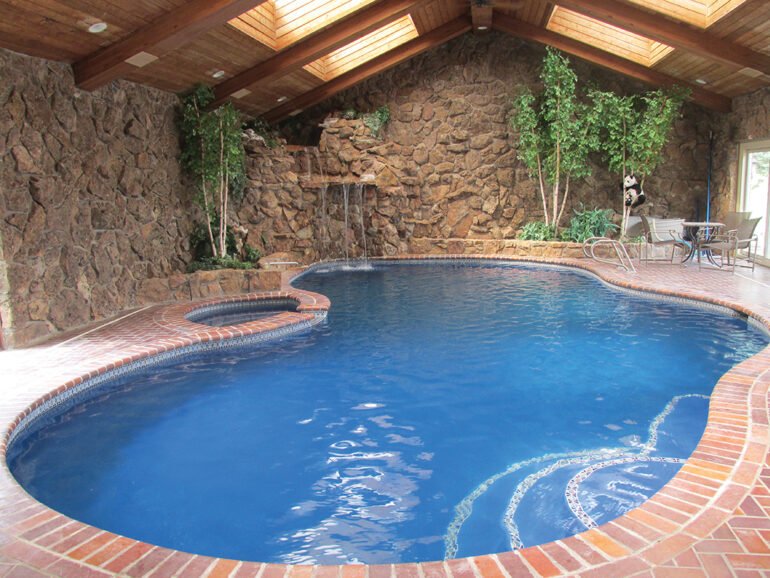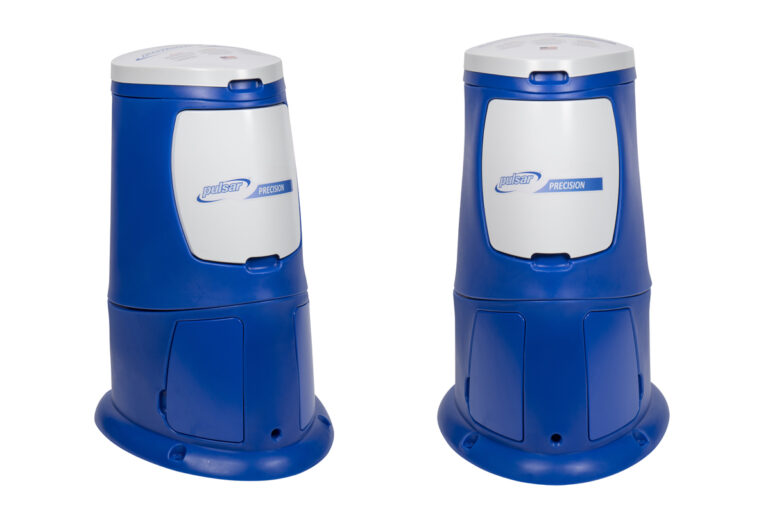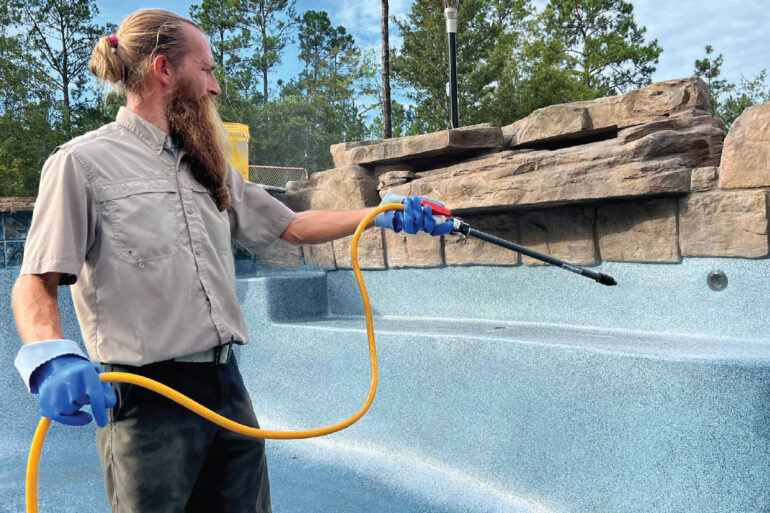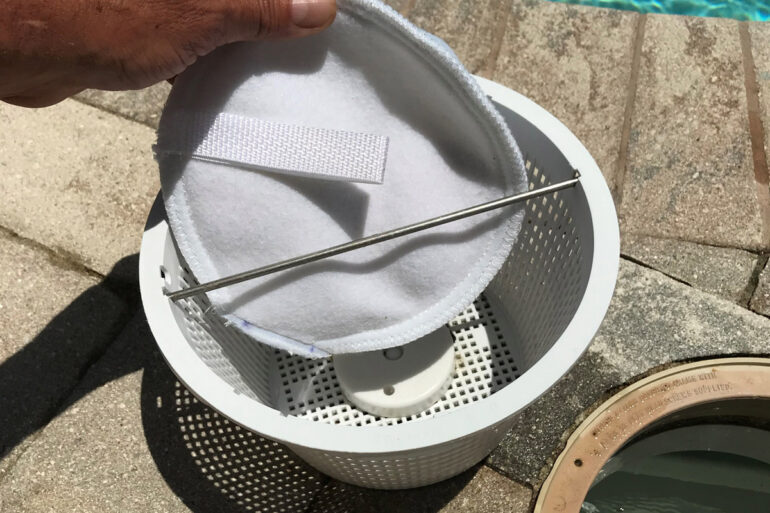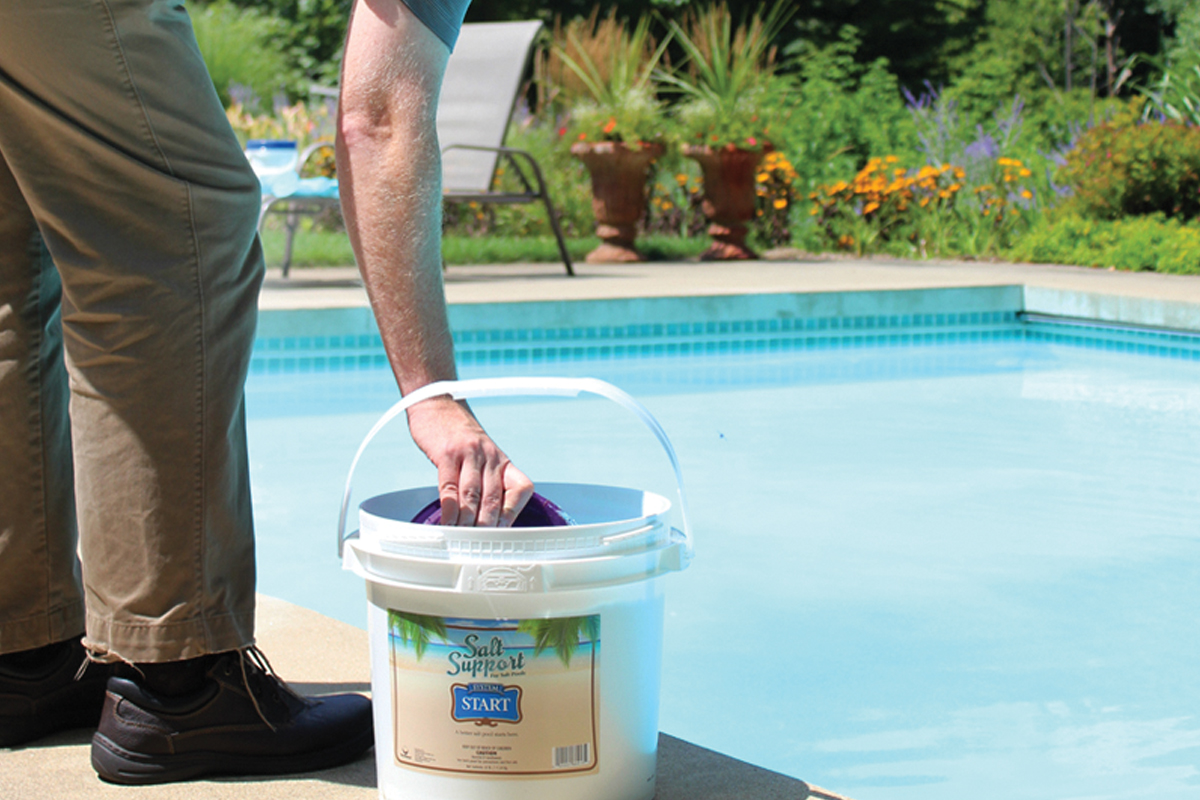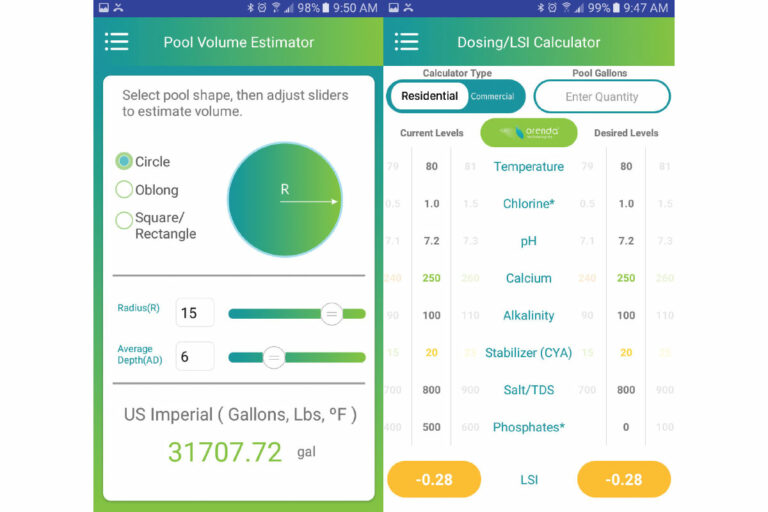Study Shows Ionization is Effective
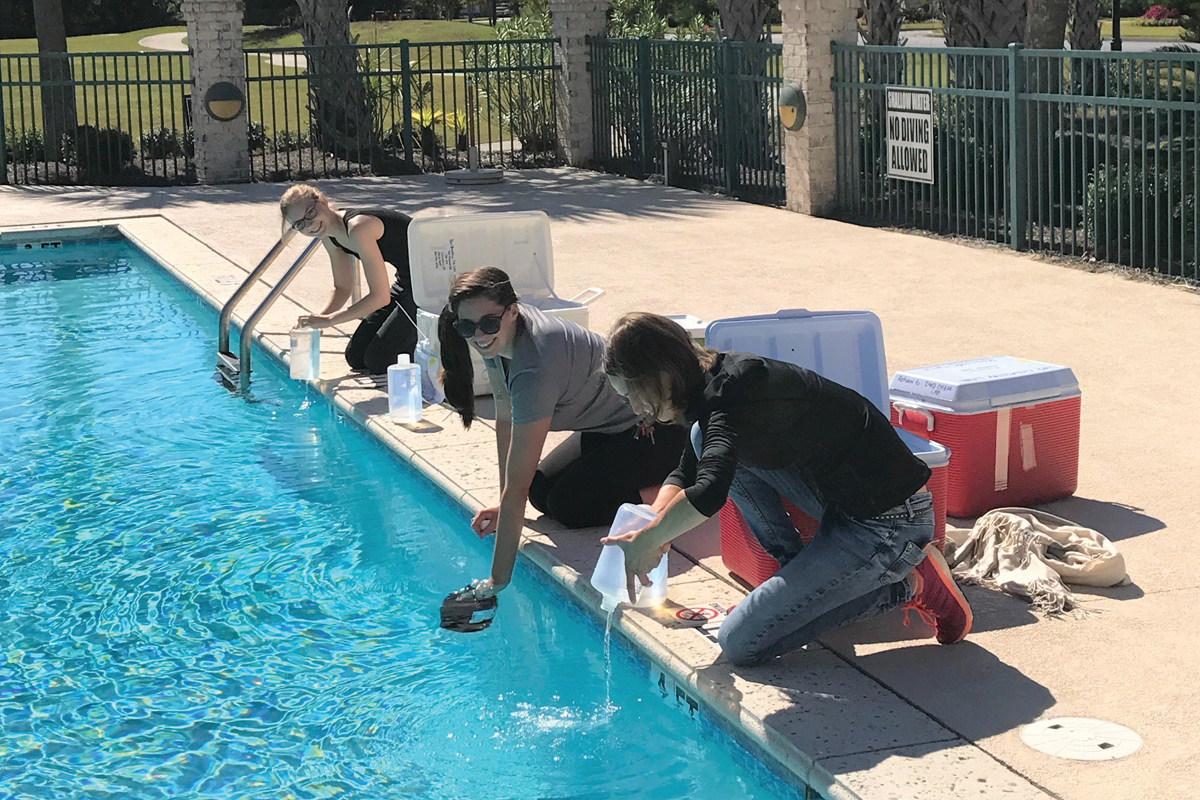
Dr. Susan Richardson has always had an interest in reducing the risk of disinfection by-products (DBPs) in swimming pools. Richardson, who works in the department of chemistry and biochemistry at the University of South Carolina, has been a private pool owner for more than 25 years and, as a mom, is concerned about her children’s chemical exposure.
“In my pool, I would try to keep the chlorine as low as possible — 0.5 ppm or so, where my color strip barely showed a slight lavender color — to make sure algae and other microbes were controlled,” she says.
When Richardson heard that Coastal Pure, a commercial pool service company in Myrtle Beach, South Carolina, was using copper-silver ionization as a pool water treatment method, she was intrigued at its potential for reducing DBPs. “Just like [research has] been working to make drinking water safer, [I] would like to make pools safer, too,” she says.
Copper-silver ionization uses electrodes, kept outside the pool near the pool filter. Electrical current runs through the electrodes, and the resulting ions kill pathogens. In 2017, Richardson’s team began studying water samples from two commercial pools Coastal Pure treated with ionization, one indoors and one outdoors. The research team also conducted simulated pool experiments in the lab to better control the variables, which Richardson says is difficult in real pools because of varying bather loads, contaminants, chlorine levels and water sources.
Dr. Josh Allen, who studied under Richardson and is now an assistant professor of environmental chemistry at High Point University in North Carolina, was heavily involved with the study that spanned 2019. “We quantified over 70 individual DBPs, which are organic compounds that form from chlorine reacting with organic matter and inputs from swimmers like urine, sweat, sunscreen and cosmetics,” Allen says.
The research team measured DBPs, total organic halogen and toxicity for copper-silver ionization; copper-silver ionization with lower chlorine dose (at 1 ppm); and traditional chlorine. Allen says that the results were very promising. “We found that most DBP concentrations and toxicity decreased when less chlorine (1 ppm residual) was used along with ionization, compared to events with higher levels of chlorine (3 to 5 ppm),” he explains. “The chlorine certainly drives DBP formation, so the idea was to lower chlorine use because the addition of ionization aids with disinfection.”
It was also determined through the controlled experiments that ionization had no effect on DBP formation or toxicity. “Additionally, E. coli and total coliforms were not present for the 1 ppm chlorine event, which shows that disinfection was still effective when using low amounts of chlorine plus ionization,” Allen adds.
There are no regulatory limits for copper and silver in pools, Richardson says, but the minerals released during the ionization process were at low and safe levels. “This was something I was initially concerned with — the potential release of copper and silver into the environment when backwashing the pool filters,” she says. “But we found that copper was well below EPA’s drinking water regulatory limit, and silver was well below EPA’s secondary drinking water regulatory limit.”
Richardson was also impressed at the effectiveness of ionization as a pool-water disinfectant. She recalls years of opening her own outdoor pool in the spring after it was covered and there being a thick layer of algae on top. “The first time we sampled one of the outdoor pools [with ionization] was during March, following a long winter where no chlorine had been applied since October,” she says. “The outdoor pool was uncovered, open to sunlight and only had copper-silver ionization treatment during this time. I was shocked to see the pool was perfectly clear — no algae. I had never seen this before.”
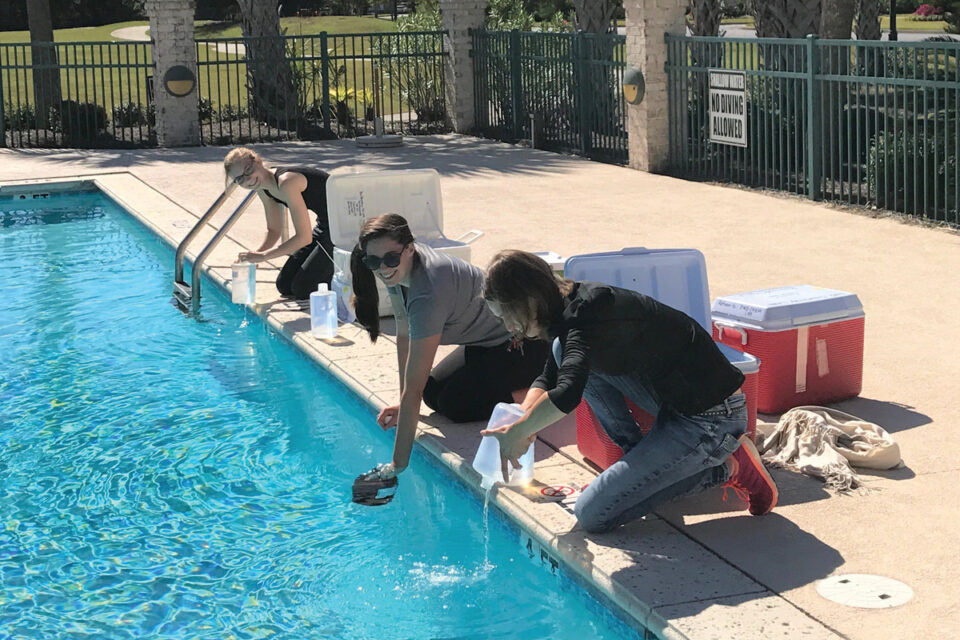
Results from the study indicate that using copper-silver ionization with a lower dose of chlorine may be a great way to make pools safer. “While states and municipalities require a certain amount of chlorine to be present in pools, it doesn’t have to be the high levels that are usually there,” Richardson says. Richardson and Allen hope that alternative treatment strategies to chlorine will continue to be investigated and implemented. “Chlorine is very effective for disinfection and controlling waterborne diseases,” Allen says. “The ultimate goal is to make swimming as safe as possible, and we should continue to work to find ways to achieve that.”

